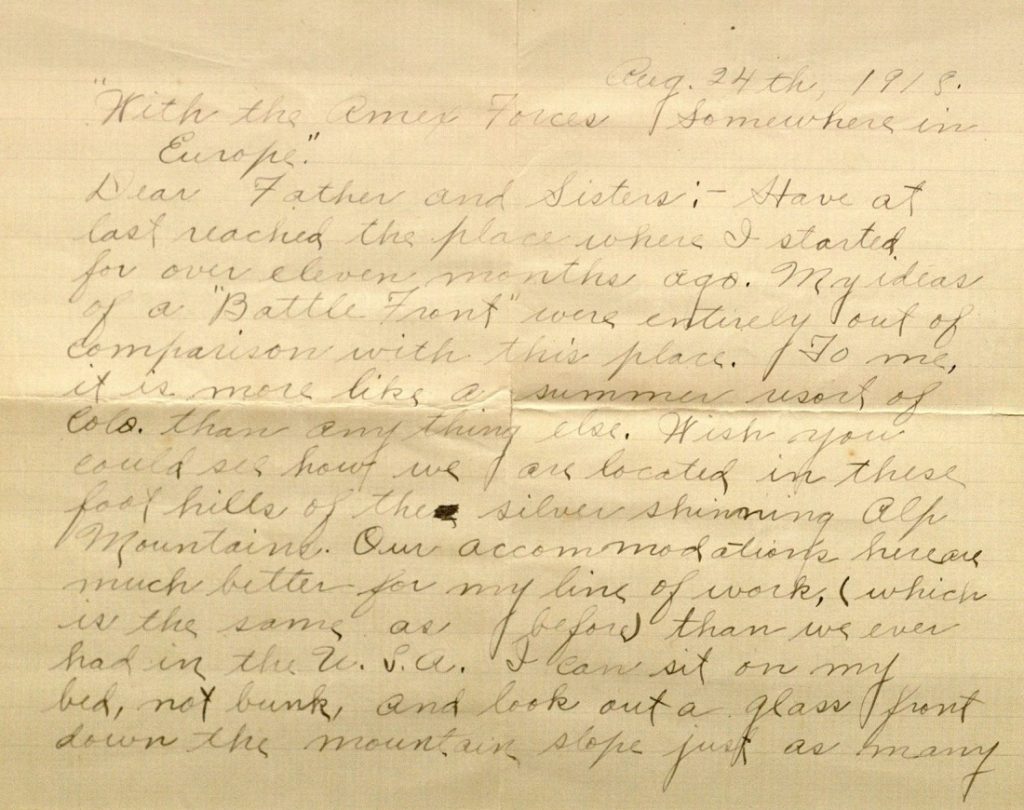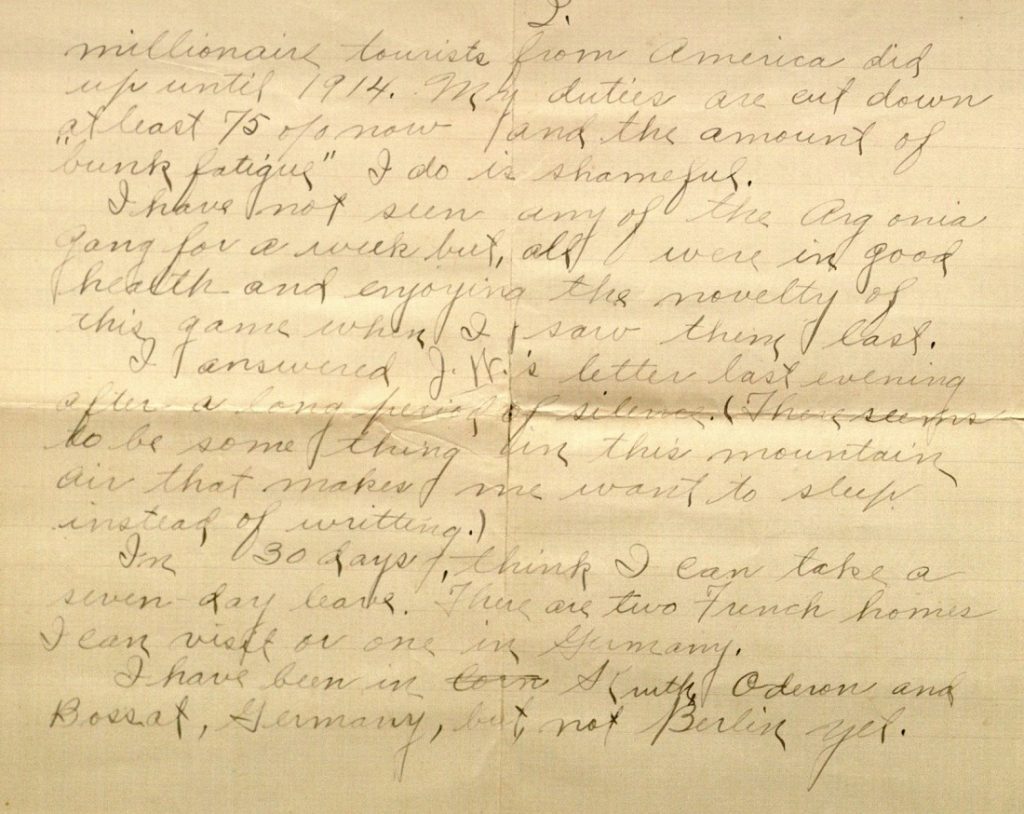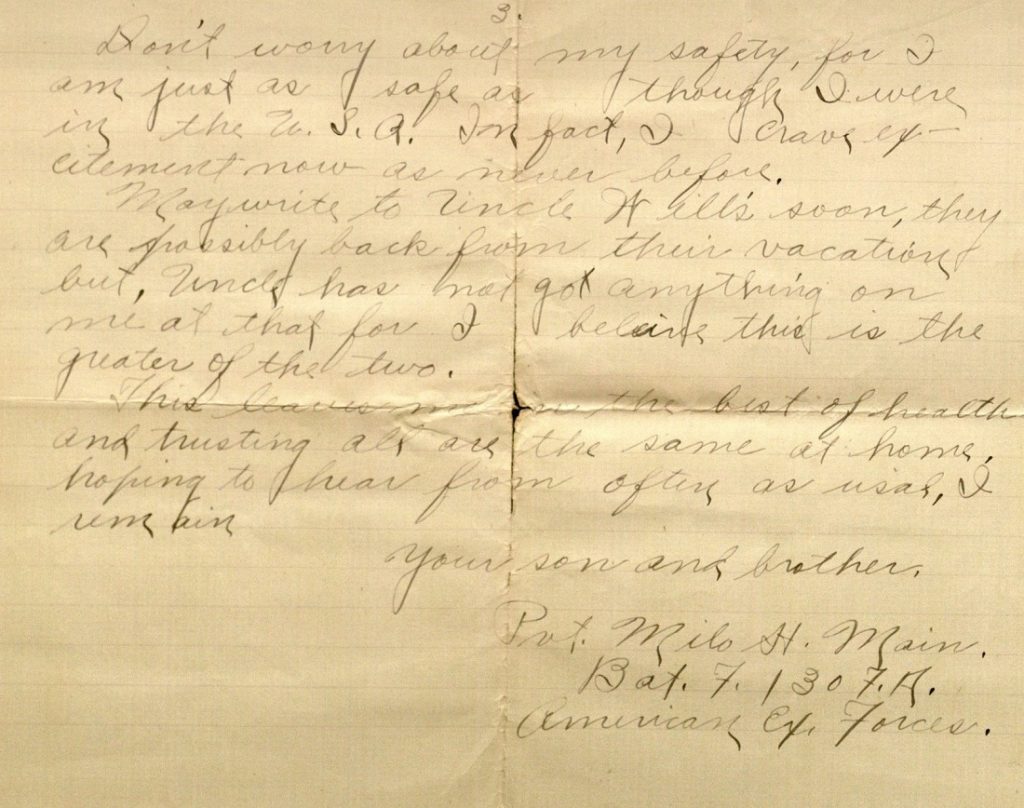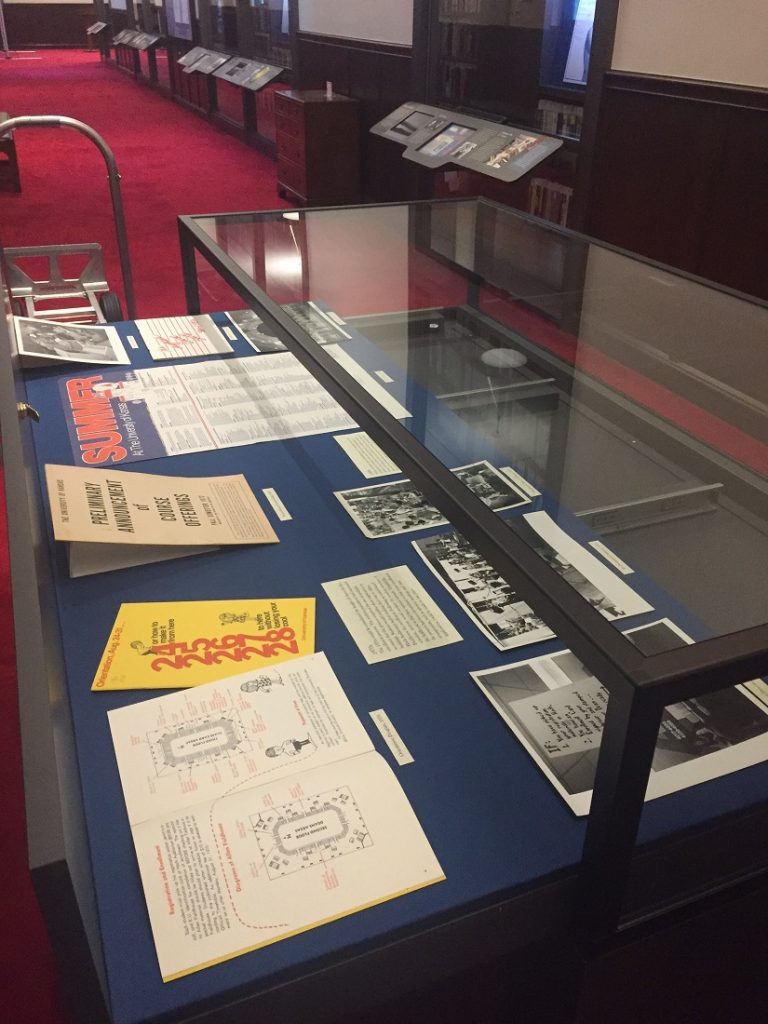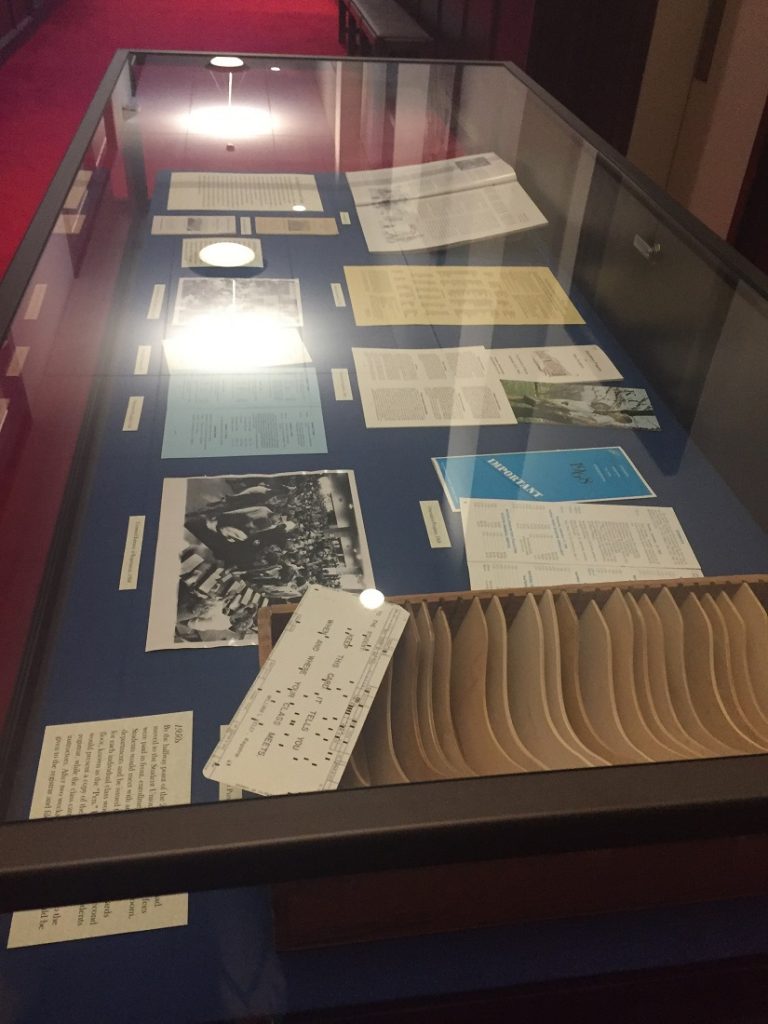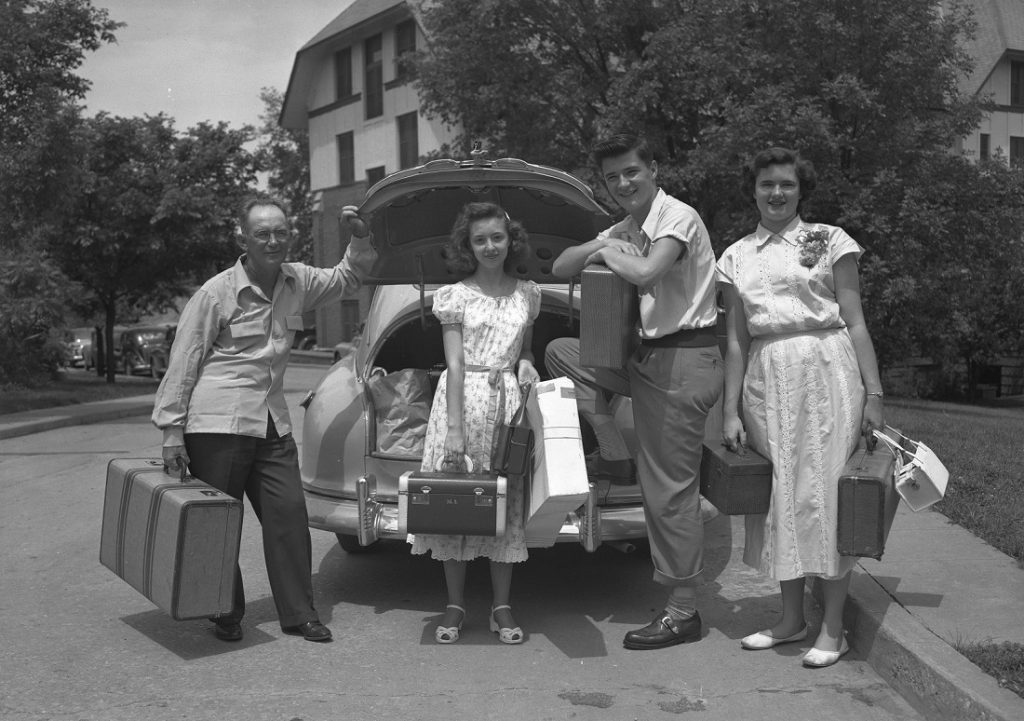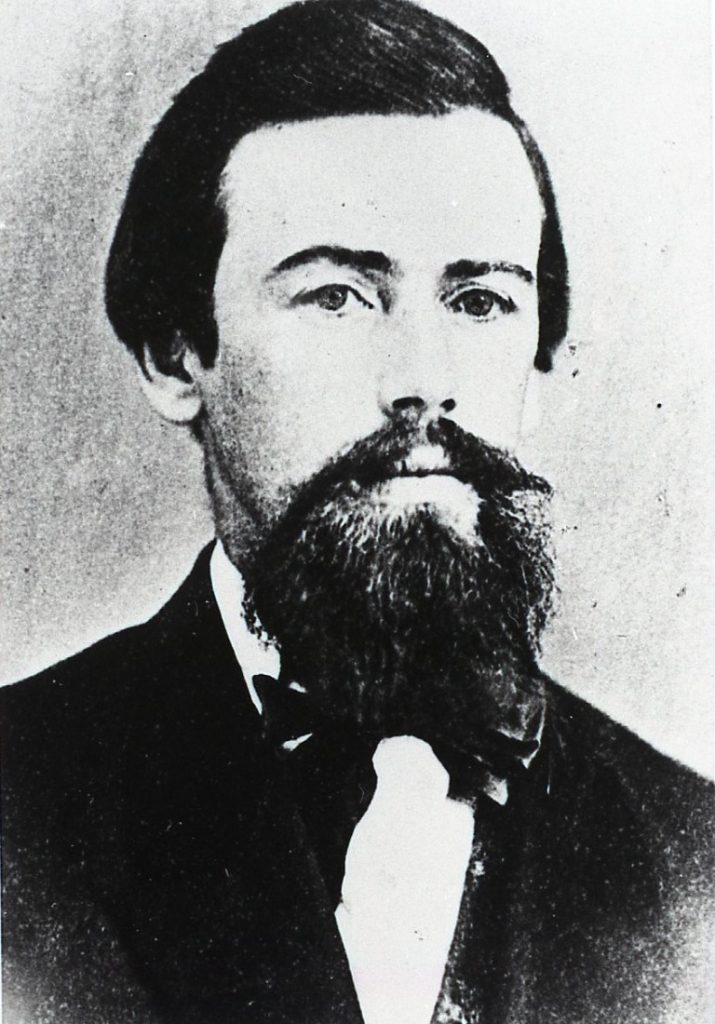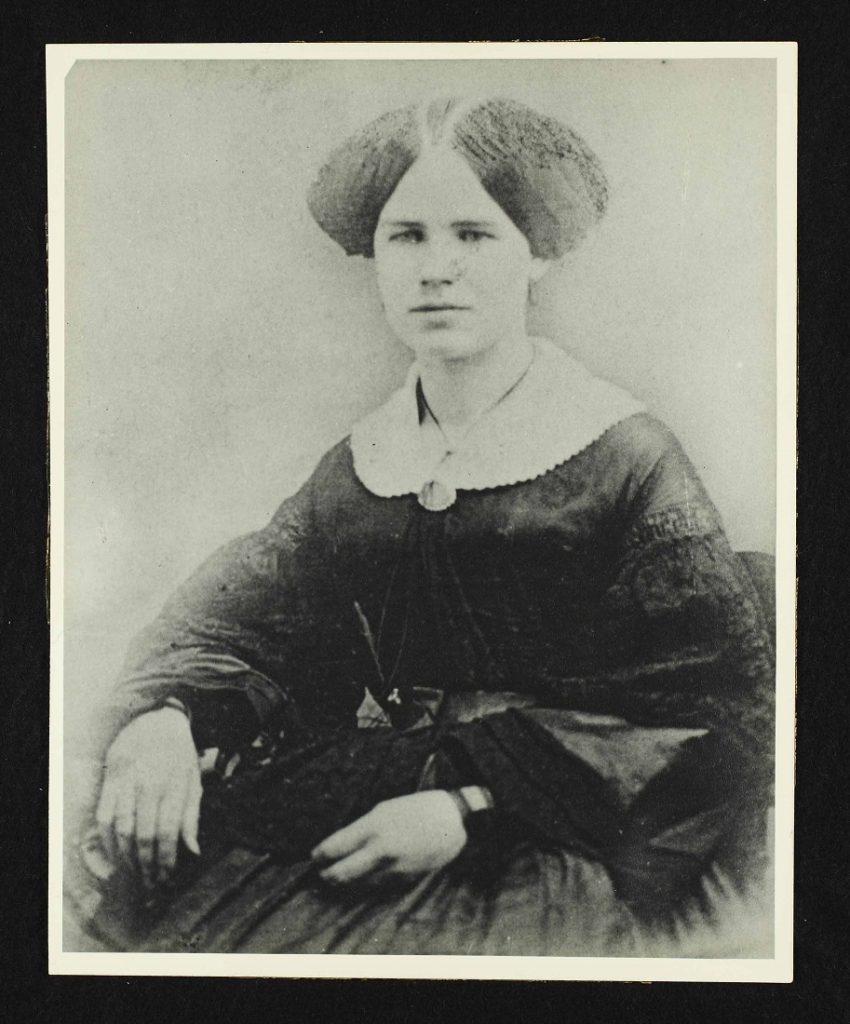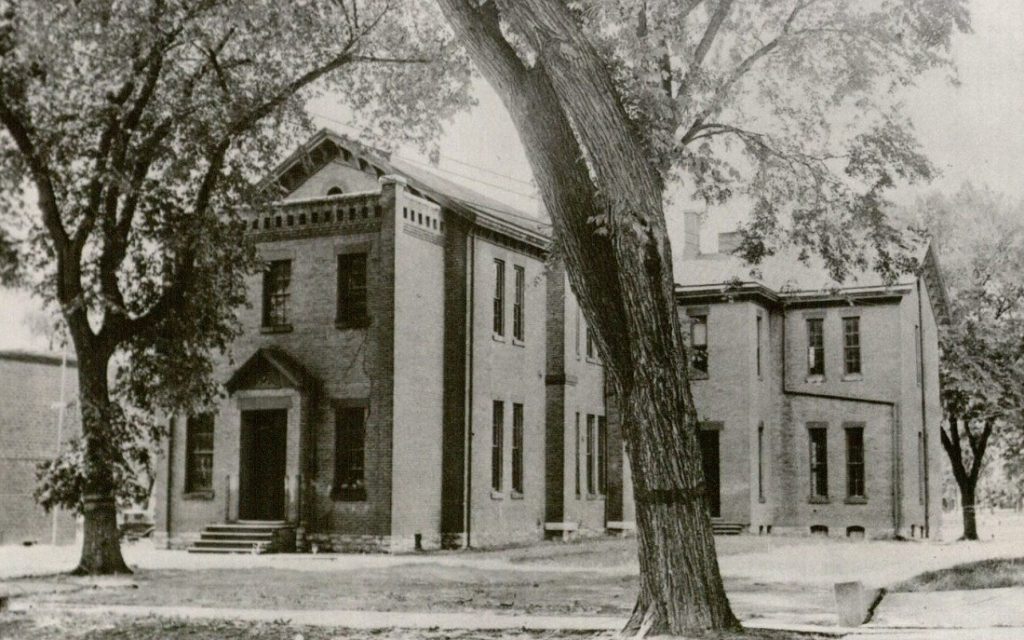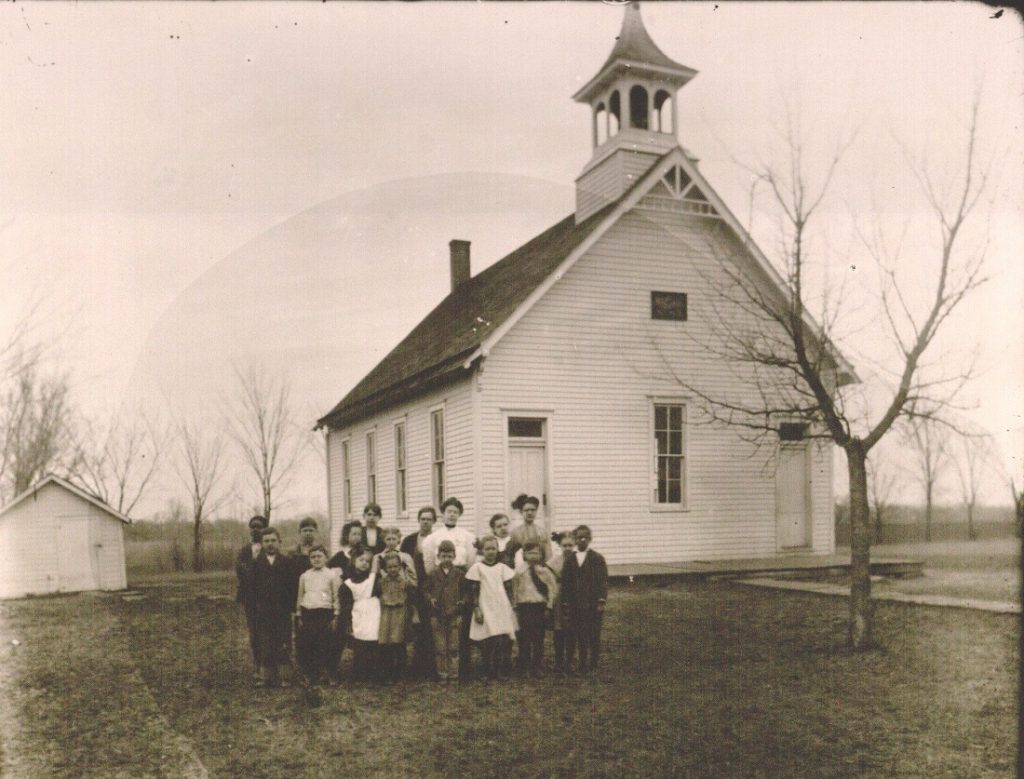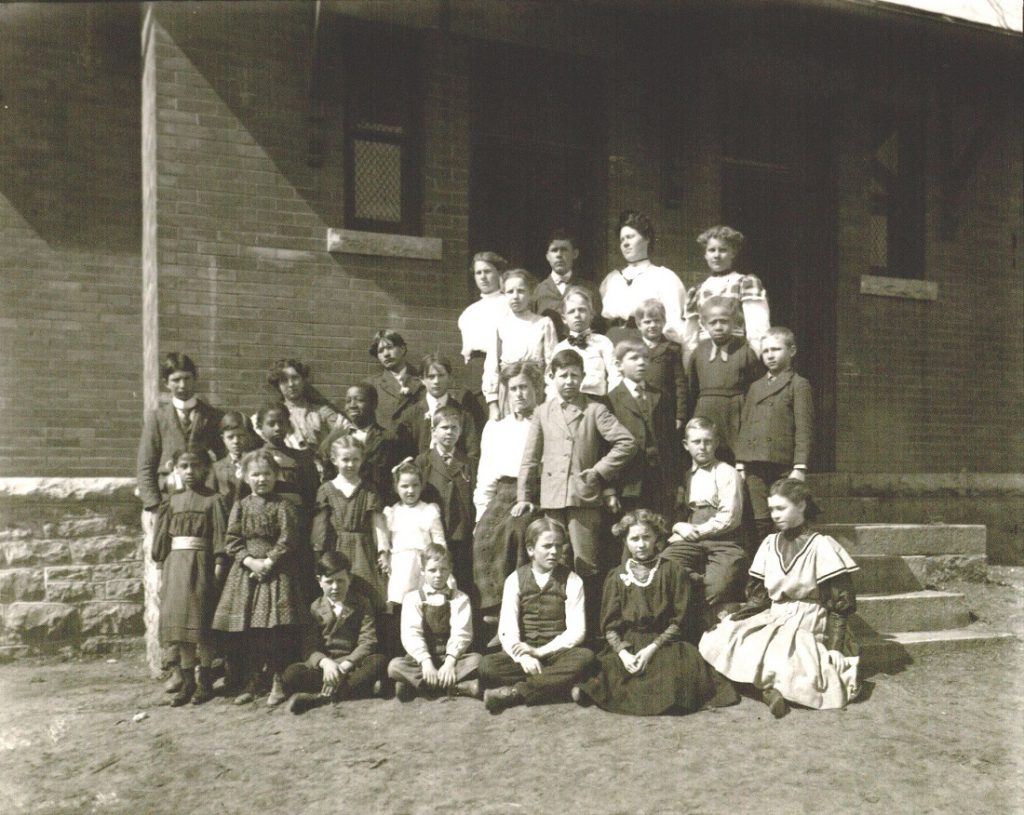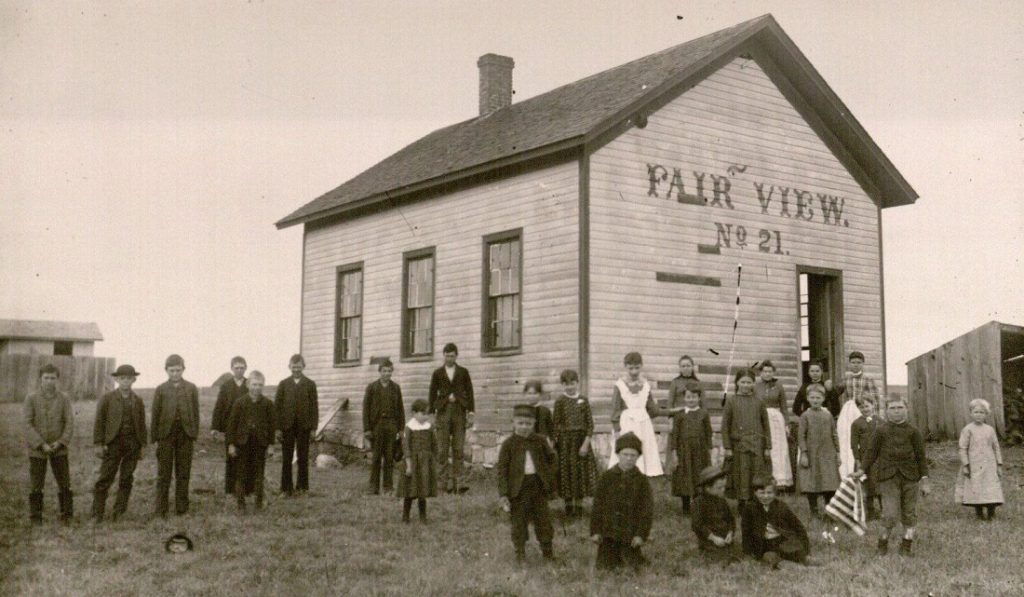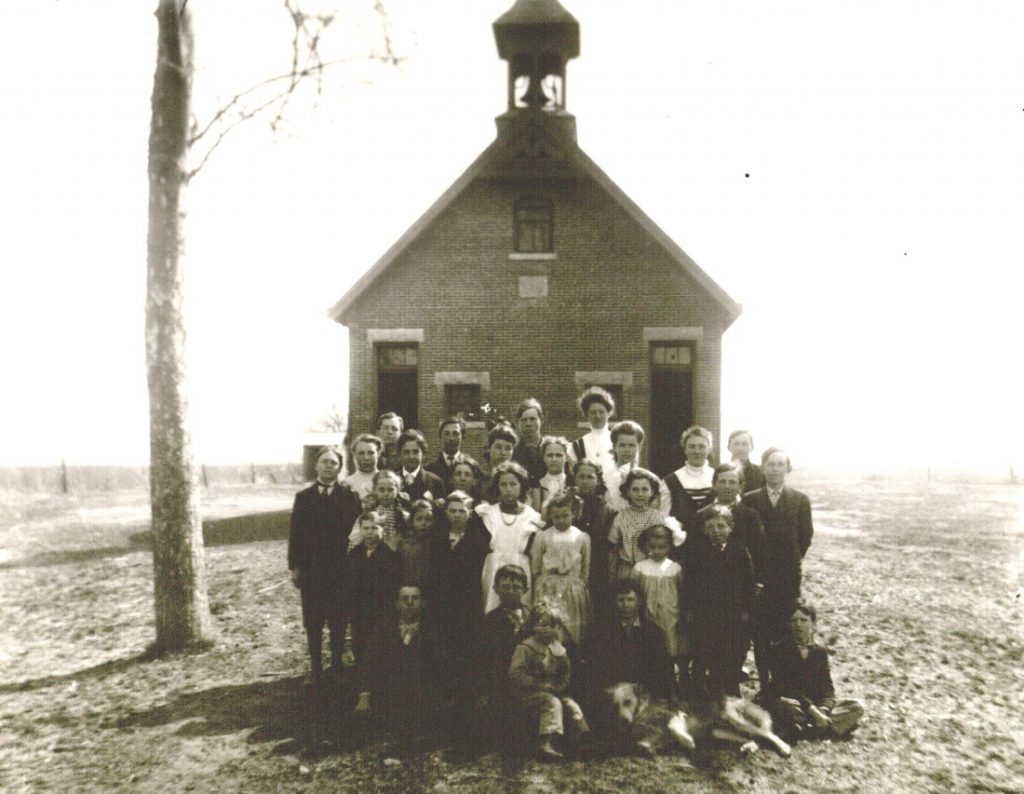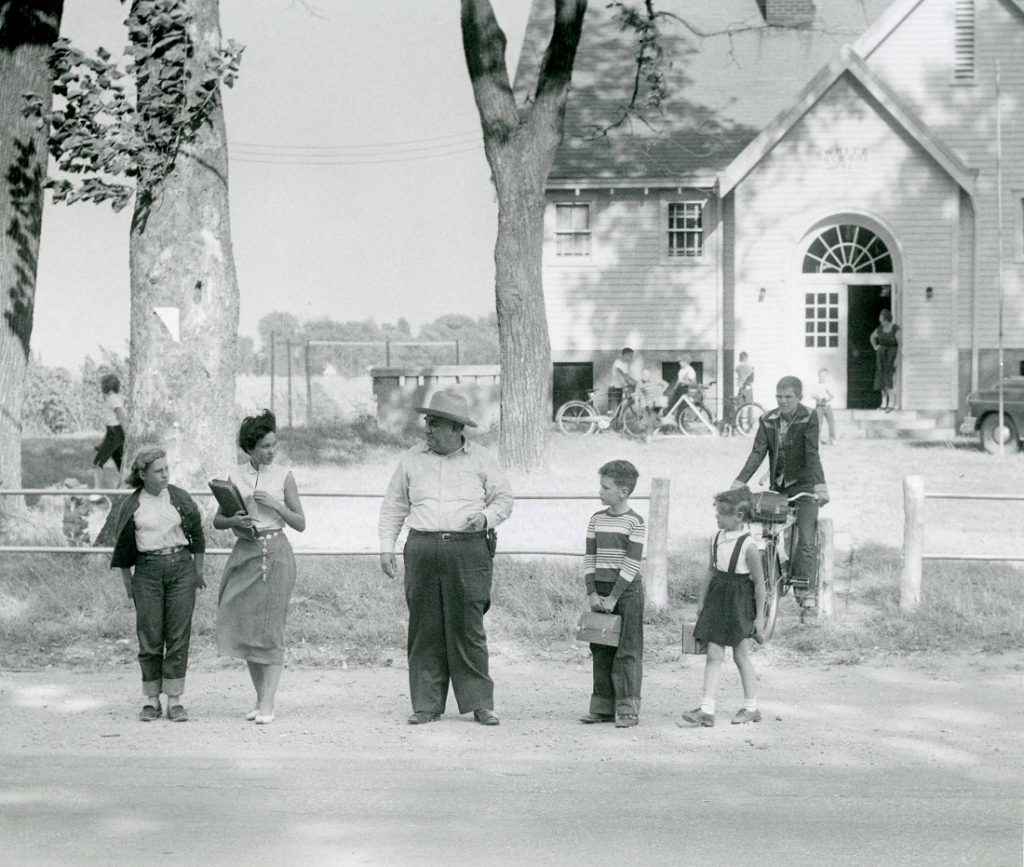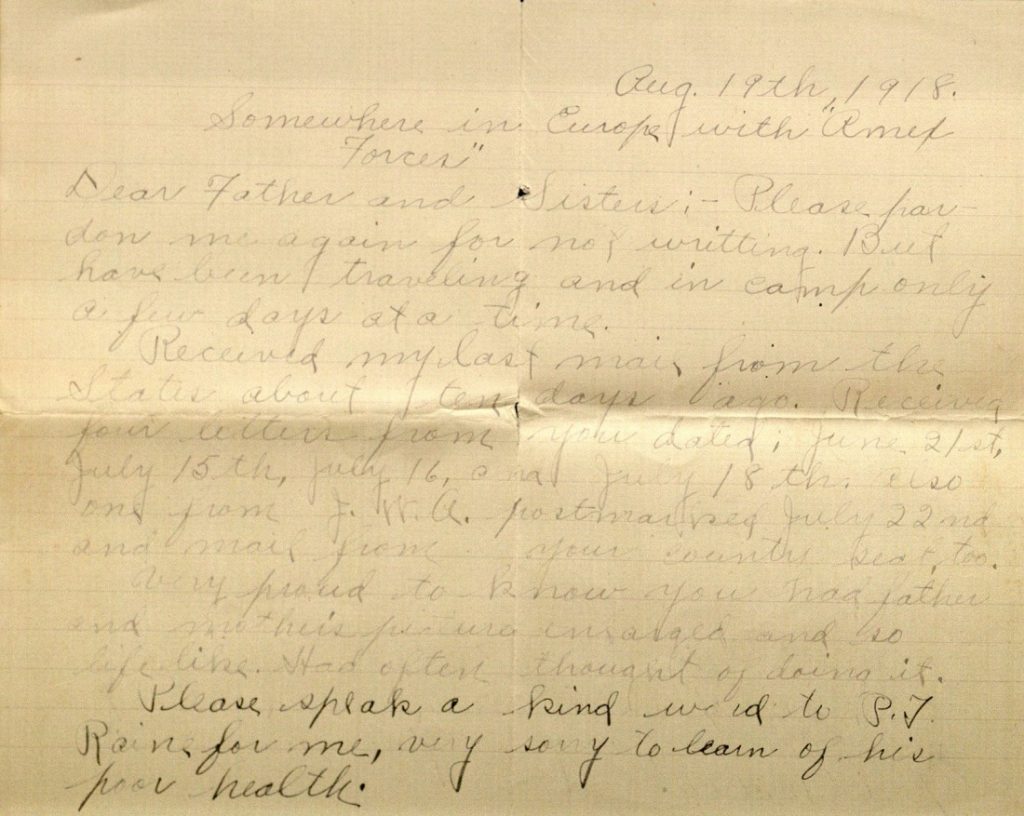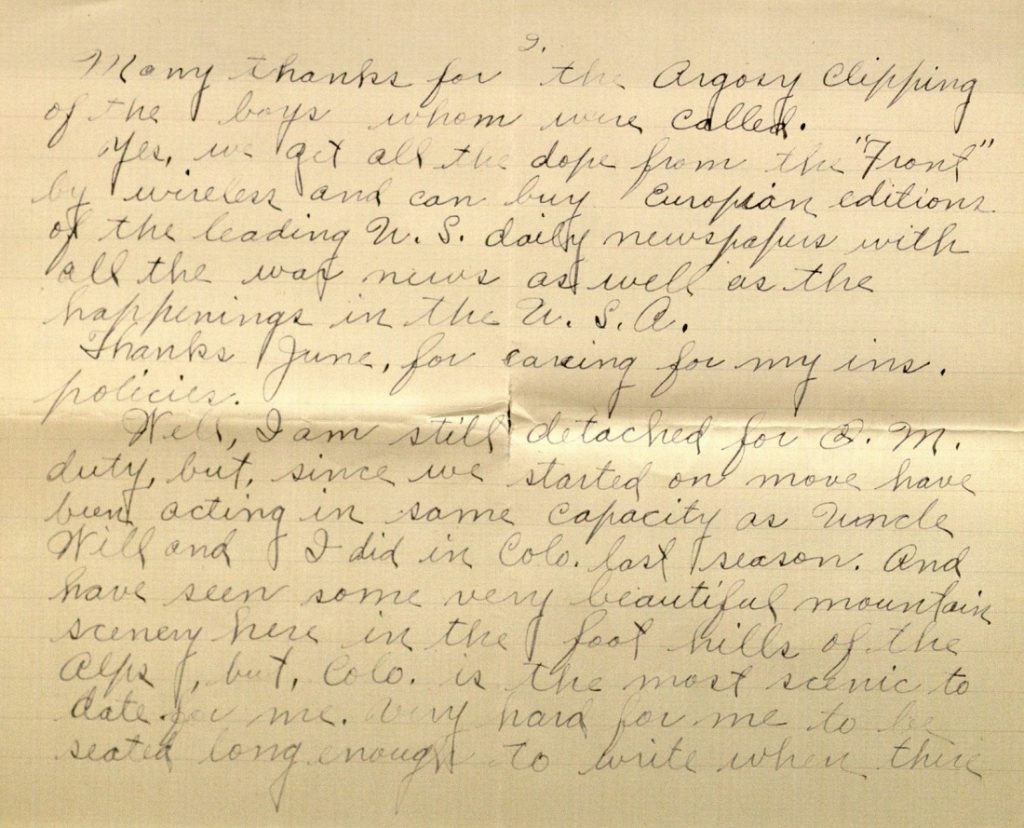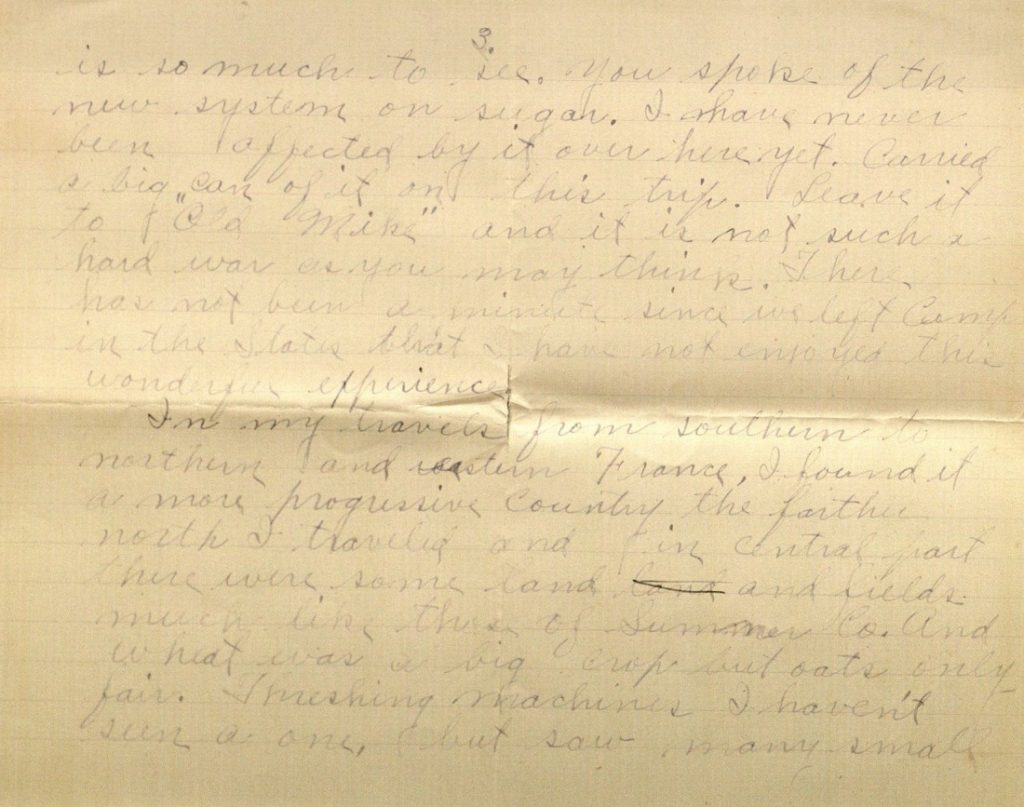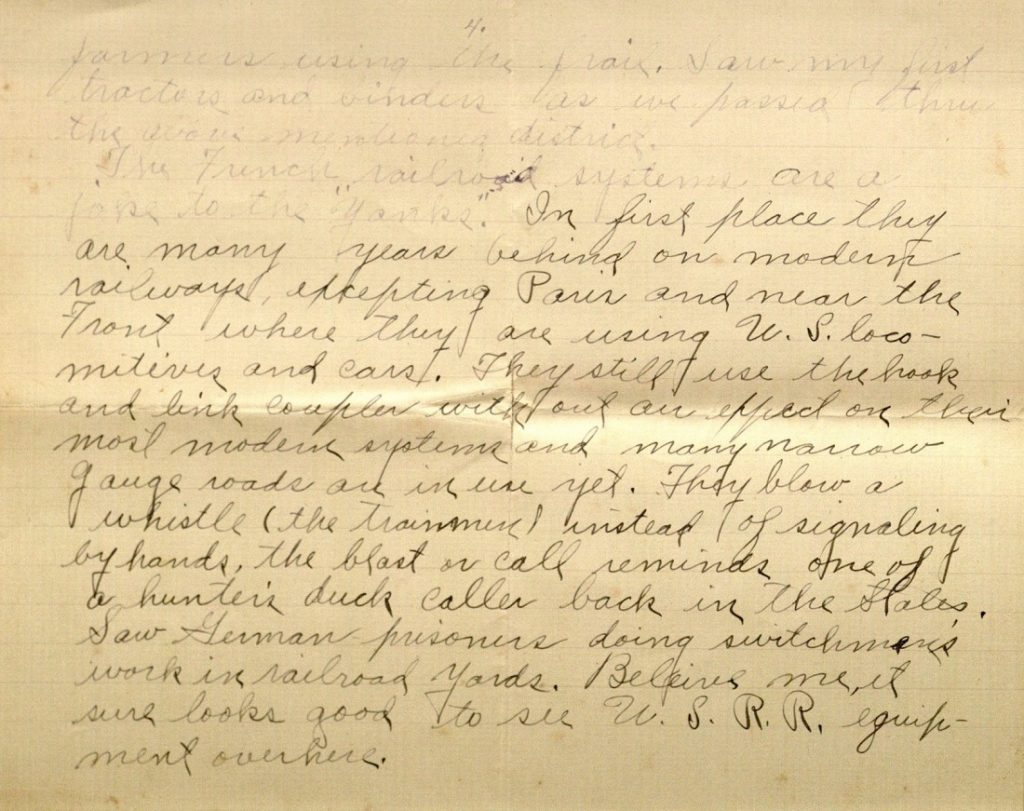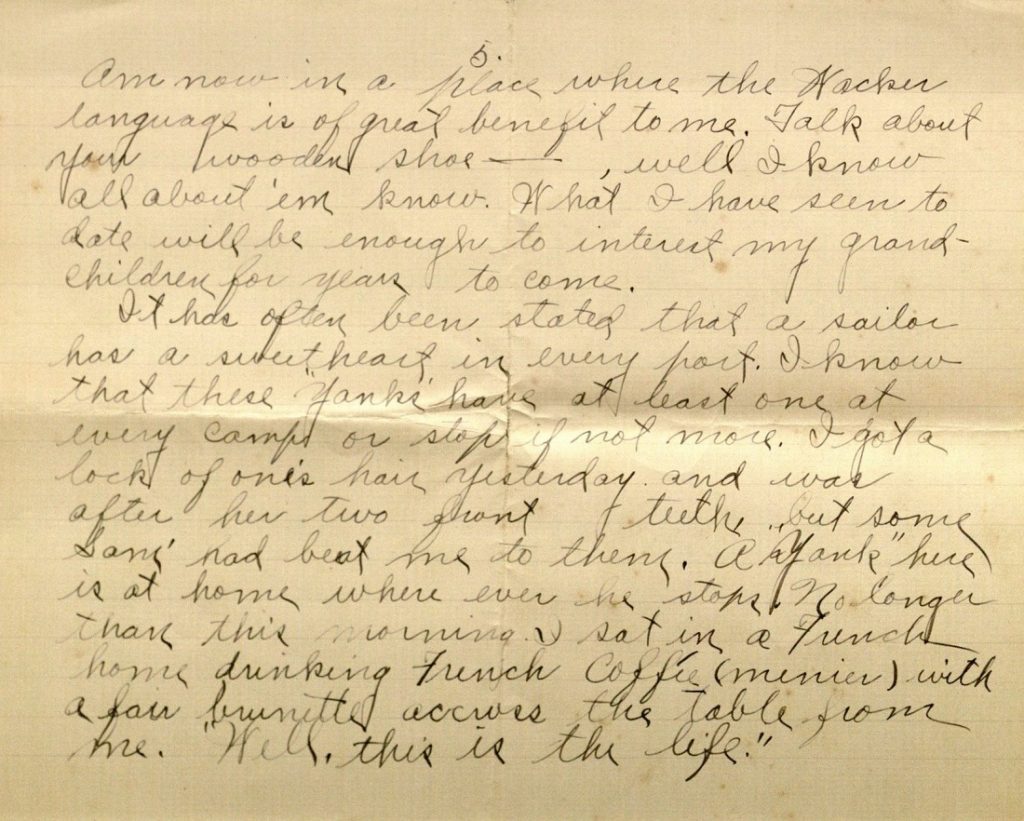World War I Letters of Milo H. Main: August 20-26, 1918
August 20th, 2018In honor of the centennial of World War I, this is the second series in which we follow the experiences of one American soldier: twenty-five year old Milo H. Main, whose letters are held in Spencer’s Kansas Collection. On Mondays we’ll post a new entry featuring selected letters from Milo to his family from that following week, one hundred years after he wrote them.
Milo Hugh Main was born in or near Pittsfield, Illinois, on November 21, 1892 to William and Rose Ella Henry Main. The family moved to Argonia, Sumner County, Kansas, in 1901. After his mother died in 1906, Milo remained in Argonia with his father and his two sisters Gladys (b. 1890) and June (b. 1899). His youngest sister Fern (b. 1905) was sent to live with relatives in Illinois.
As Milo reported to the Kansas State Historical Society in 1919, after graduating from high school he worked as a store clerk. He resigned in July 1917 and took a position at Standard Oil Company, possibly co-managing a gas station in Argonia.
Milo entered into military service on September 21, 1917. He served as a wagoner – a person who drives a wagon or transports goods by wagon – in Battery F, 130th Field Artillery. He was stationed at Camp Funston (September-October 1917) and Camp Doniphan (October 1917-May 1918). On May 19, 1918, he boarded the ship Ceramic in New York City and departed for Europe.
In this week’s letter, Milo describes reaching the Alps. “Wish you could see how we are located in these foot hills of the silver shinning Alp Mountains,” he wrote. “I can sit on my bed, not bunk, and look out a glass front down the mountain slope just as many millionaire tourists from America did up until 1914.”
Aug. 24th, 1918.
“With the Amex Forces Somewhere in Europe”
Dear Father and Sisters:- Have at last reached the place where I started for over eleven months ago. My ideas of a “Battle Front” were entirely out of comparison with this place. To me, it is more like a summer resort of Colo. than any thing else. Wish you could see how we are located in these foot hills of the silver shinning Alp Mountains. Our accommodations here are much better for my line of work, (which is the same as before) than we ever had in the U.S.A. I can sit on my bed, not bunk, and look out a glass front down the mountain slope just as many millionaire tourists from America did up until 1914. My duties are cut down at least 75% now and the amount of “bunk fatigue” I do is shameful.
I have not seen any of the Argonia gang for a week but, all were in good health and enjoying the novelty of this game when I saw them last.
I answered J.W.’s (1) letter last evening after a long period of silence. (There seems to be some thing in this mountain air that makes me want to sleep instead of writting.)
In 30 days, think I can take a seven-day leave. There are two French homes I can visit or one in Germany.
I have been in [Struth or Kruth] (2), Oderon and Bossat (3), Germany, but, not Berlin yet.
Don’t worry about my safety, for I am just as safe as though I were in the U.S.A. In fact, I crave excitement now as never before.
May write to Uncle Will’s (4) soon, they are possibly back from their vacation but, Uncle has not got anything on me at that for I beleive this is the greater of the two.
This leaves me in the best of health and trusting all are the same at home, hoping to hear from often as usal, I remain
Your son and brother,
Prvt. Milo H. Main.
Bat. F. 130 F.A.
American Ex. Forces.
(1) Possibly J. W. Achelpohl, a storeowner in Argonia mentioned in Milo’s letter of August 19th. According to Milo’s World War I draft registration card, Achelpohl was his employer when he worked as a clerk.
(2) Milo may be referring to Kreuth in southern Germany.
(3) It’s not clear what places Milo is referencing here.
(4) Probably William M. Henry, a brother of Milo’s mother mentioned in his letter of August 19th. Born in Illinois in 1861, William relocated to Sumner County, Kansas, with his wife and children around 1900.
Meredith Huff
Public Services
Emma Piazza
Public Services Student Assistant

